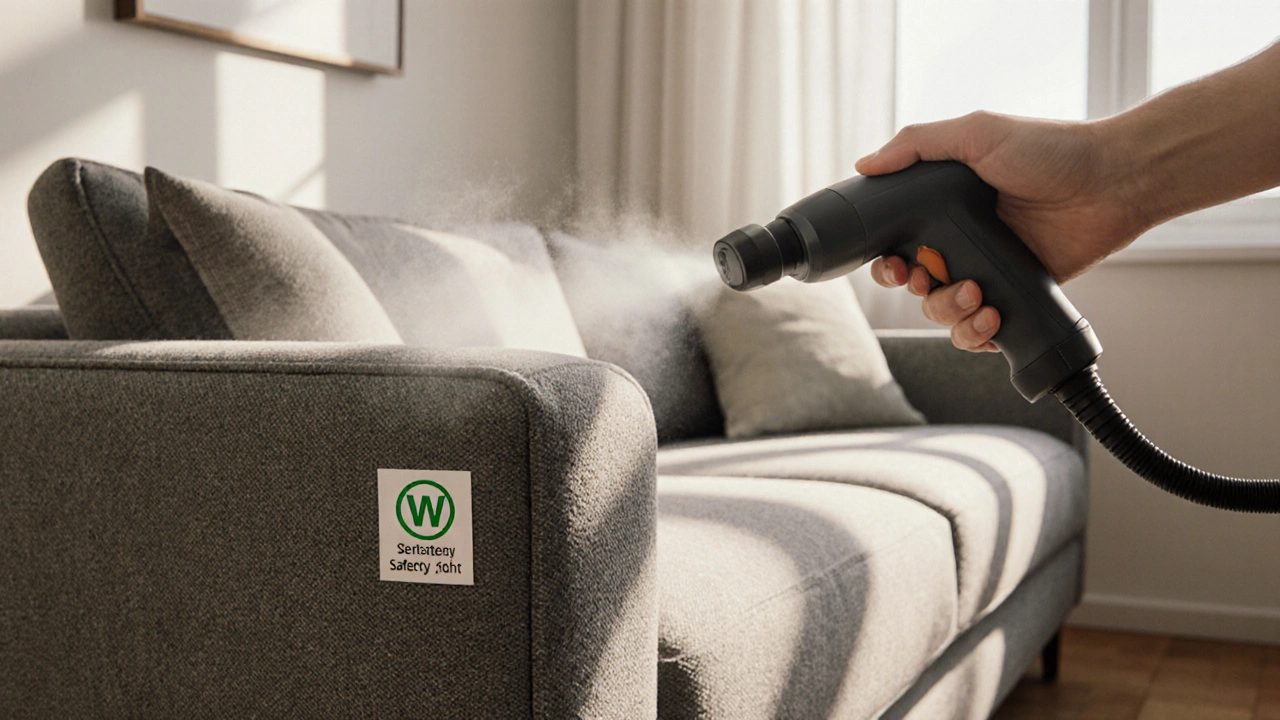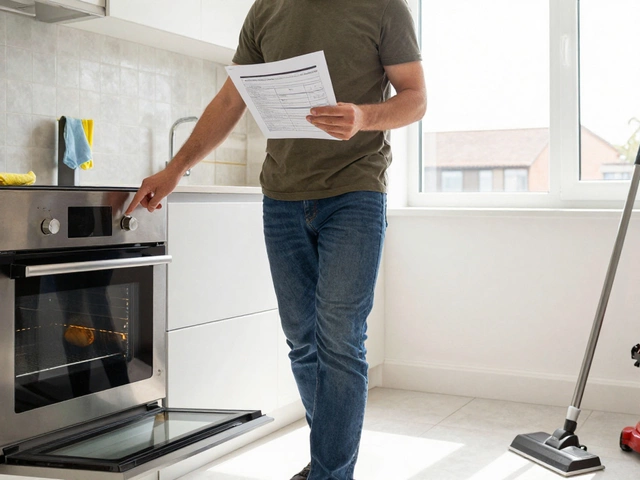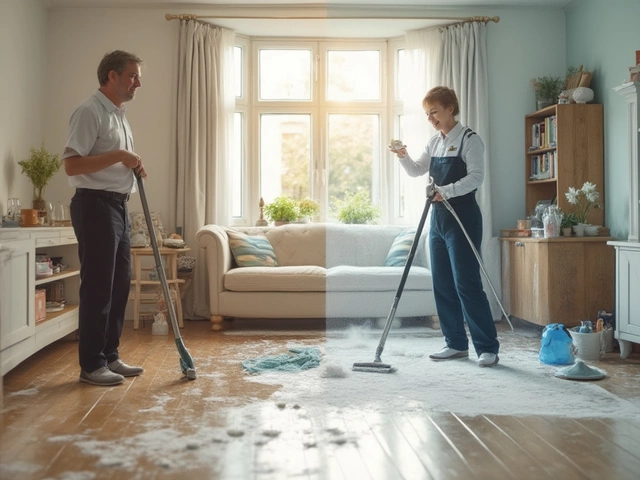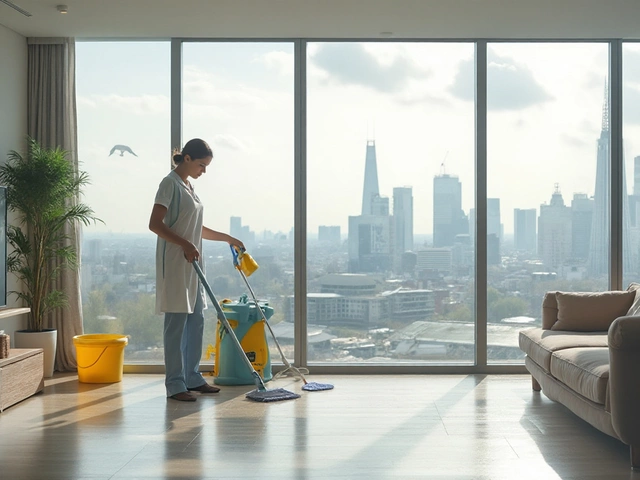Wondering if you can steam clean couch without ruining it? Steam cleaning is a fast way to refresh upholstery, but it isn’t a one‑size‑fits‑all solution. This guide walks you through the science, the safety checks, and the exact steps you need to get a fresh‑looking couch without a stitch of damage.
What Is Steam Cleaning and How It Works
Steam cleaning is a method that uses heated water vapor to loosen dirt, oils, and allergens from fabric fibers. The heat softens grime while the moisture lifts it away, and a built‑in suction or a follow‑up vacuum removes the residue. Because it relies on temperature rather than harsh chemicals, steam cleaning is often marketed as an eco‑friendly option for upholstery.
Is Your Couch Ready for Steam? - Fabric Check
Before you grab the machine, you need to confirm that the Couch can handle heat. Look for a care tag - most manufacturers use a code system:
- W: Water‑based cleaning is safe (steam works).
- S: Solvent‑based cleaning only (avoid steam).
- X: Professional cleaning only (steam risk).
If you see a care tag with a “W,” you’re good to go. For “S” or “X,” skip the steam and consider a dry‑cleaning method.
Step‑by‑Step Guide to Steam Cleaning a Couch
- Gather your tools: Steam Cleaner, Vacuum Cleaner with upholstery attachment, soft‑bristle brush, and a clean microfiber cloth.
- Test a hidden spot: Run the steam cleaner on a small, out‑of‑sight area for 30 seconds. Wait five minutes - if the fabric shows discoloration, curling, or a strong odor, stop immediately.
- Vacuum first: Remove loose crumbs, pet hair, and surface dust. This prevents the steam from turning debris into a soggy paste.
- Prep the steam cleaner: Fill the reservoir with distilled Water to avoid mineral buildup. Set the temperature between 212°F (100°C) and 230°F (110°C), the range most upholstery fabrics tolerate.
- Apply steam in sections: Hold the nozzle about 6‑8 inches from the fabric, moving slowly in overlapping strokes. Do not saturate; the goal is a light mist that penetrates the fibers.
- Agitate gently: Use the soft‑bristle brush to work the steam into stubborn stains. For delicate fabrics, skip the brush and let the vapor do the work.
- Extract moisture: Immediately after steaming a section, pass the Vacuum Cleaner over the area to pull out loosened dirt and excess water.
- Dry the couch: Open windows, run a fan, or place a low‑heat hairdryer a few inches away. The upholstery should feel dry to the touch within 2‑3 hours.
- Apply a fabric protector (optional): Once dry, spray a Fabric Protector designed for upholstery. This adds a layer of repellent against future spills.
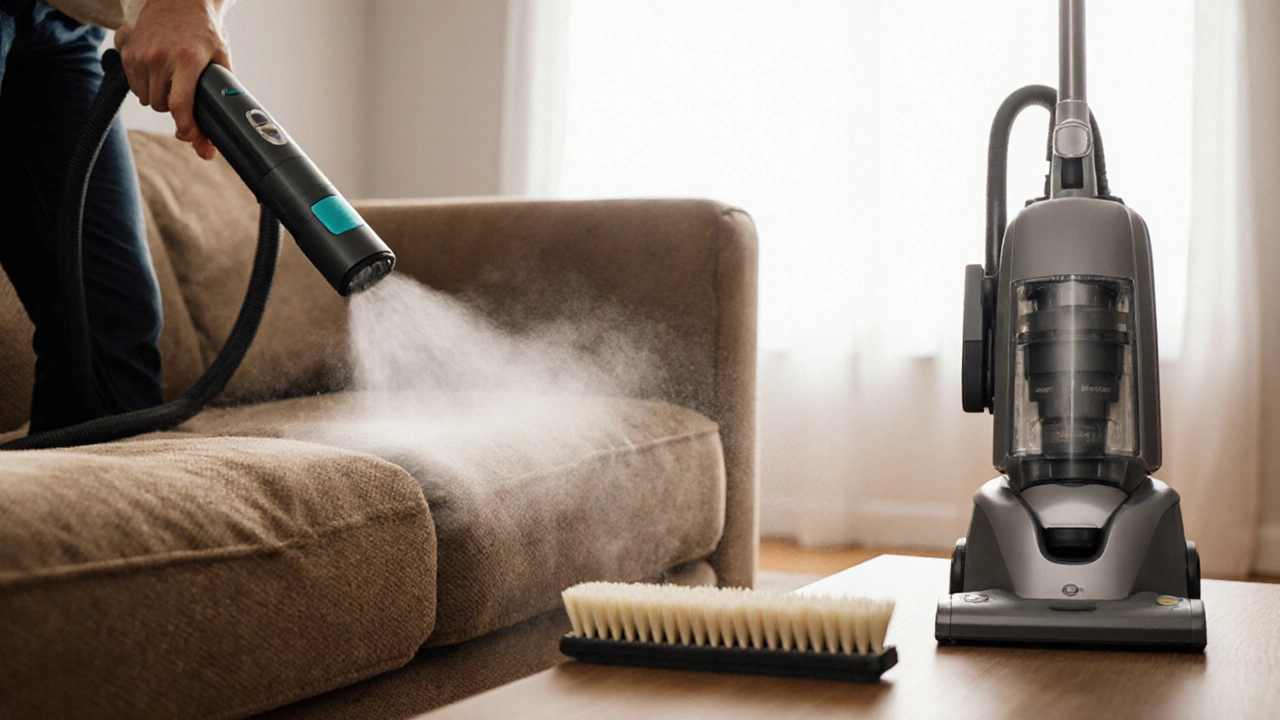
Common Mistakes and How to Avoid Them
Even seasoned DIYers slip up. Here are the top pitfalls:
- Over‑wetting: Too much moisture can cause mold or shrinkage. Keep the nozzle moving and maintain a short distance.
- Skipping the pre‑vacuum: Dirt left on the surface turns into a muddy paste once steamed.
- Ignoring manufacturer warnings: The care tag is your best friend; ignoring it can void warranties.
- Using tap water in hard‑water areas: Mineral deposits reduce steam efficiency and can stain fabrics. Distilled water is cheap and safe.
- Not testing for colorfastness: Some dyes bleed when exposed to heat. A hidden‑spot test catches this early.
When to Call a Professional
If your couch is antique, has delicate silk or velvet upholstery, or shows extensive staining, a Professional Cleaner is worth the cost. Professionals have industrial‑grade steam units that can control temperature more precisely and often include spot‑treatment chemicals that are safe for sensitive fabrics. Additionally, if the care tag reads “X,” you’re legally required to use a professional service.
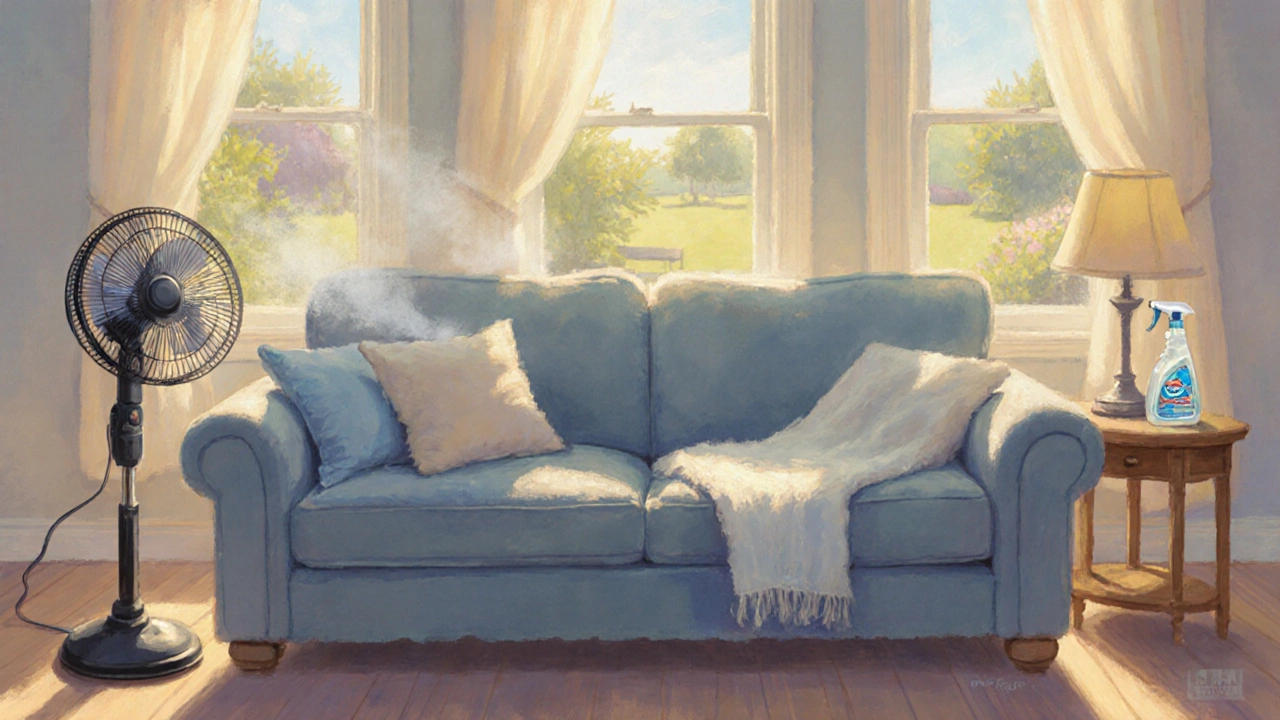
Maintenance Tips After Steam Cleaning
Keeping your couch fresh after a steam session is easier than you think:
- Vacuum weekly to remove dust and pet dander.
- Rotate cushions every few months to even out wear.
- Address spills immediately with a blot‑then‑clean routine - don’t rub.
- Re‑apply fabric protector every 3‑6 months, especially in high‑traffic homes.
- Use area rugs or throws to protect high‑use zones.
Quick Reference Table - Fabrics vs Steam Suitability
| Fabric Type | Steam‑Safe? | Notes |
|---|---|---|
| Cotton | Yes | Low‑pile cotton tolerates heat well. |
| Linen | Yes | Test first; high heat may cause slight shrinkage. |
| Polyester | Yes | Synthetic fibers handle moisture; avoid excessive steam. |
| Microfiber | Yes | Very effective; blot excess water quickly. |
| Velvet | No | Heat can crush nap and cause water marks. |
| Silk | No | Delicate fibers; use dry‑clean only. |
| Leather | No | Steam will stiffen and damage finish. |
| Suede | No | Moisture changes texture irreversibly. |
Frequently Asked Questions
Can I steam clean a couch with a handheld steamer?
Yes, a handheld steamer works for most fabric couches, but make sure it reaches at least 212°F and has a built‑in extractor or you follow up with a vacuum.
How long should I wait before sitting on the couch after steam cleaning?
Wait until the upholstery is completely dry - typically 2 to 3 hours. If the room is humid, give it an extra hour.
Will steam cleaning kill dust mites?
The high temperature of steam (above 140°F) kills most dust mites and their eggs, making it an effective allergen control method.
Is it safe to use a steam cleaner on a couch with wood legs?
Yes, as long as you keep the nozzle away from the wood surface. Direct steam can cause swelling or discoloration on unfinished wood.
Do I need a special cleaning solution for steam cleaning?
Most steam cleaners work with plain distilled water. If you have tough stains, add a few drops of a upholstery‑safe detergent, but never use bleach.
